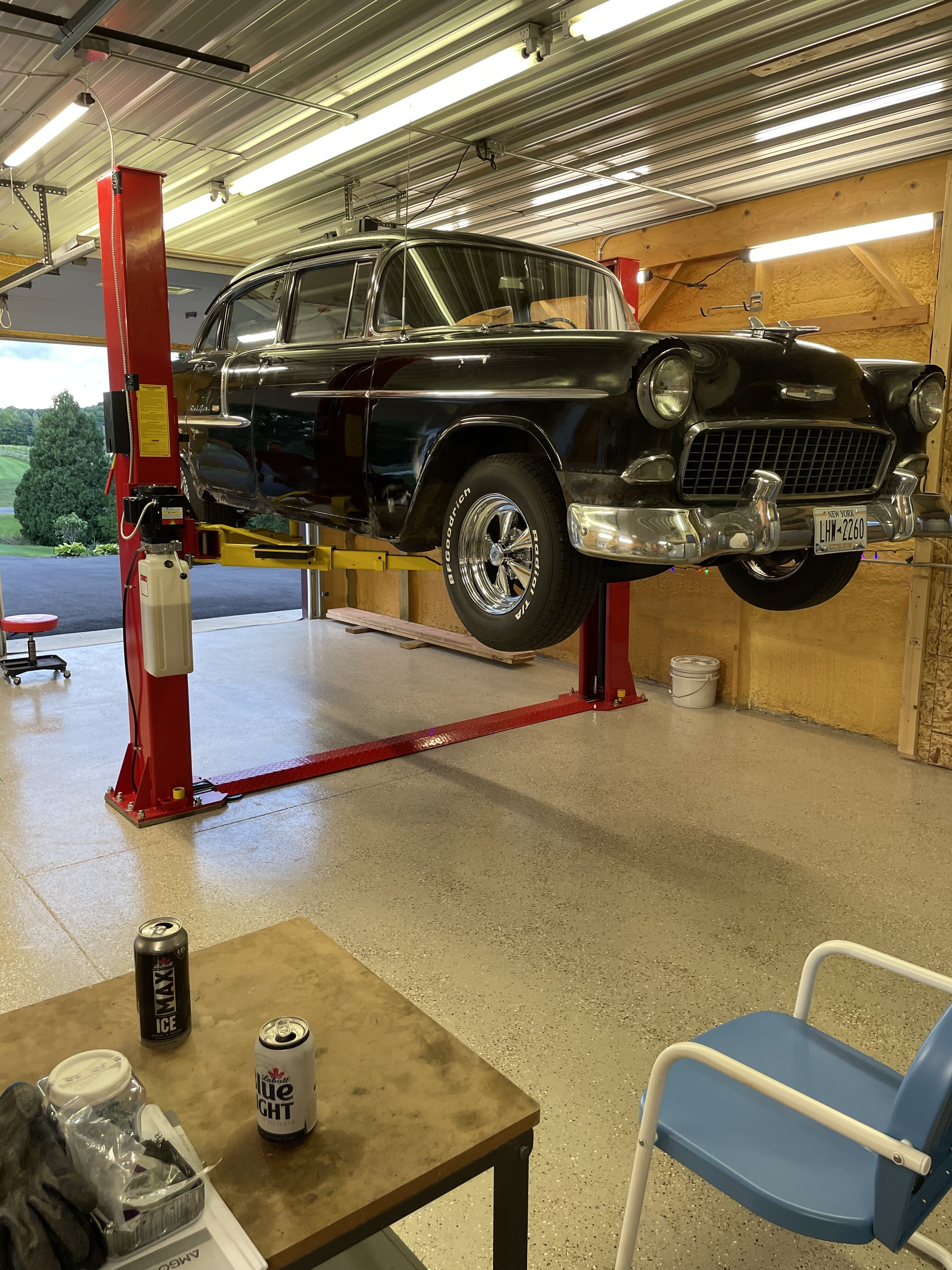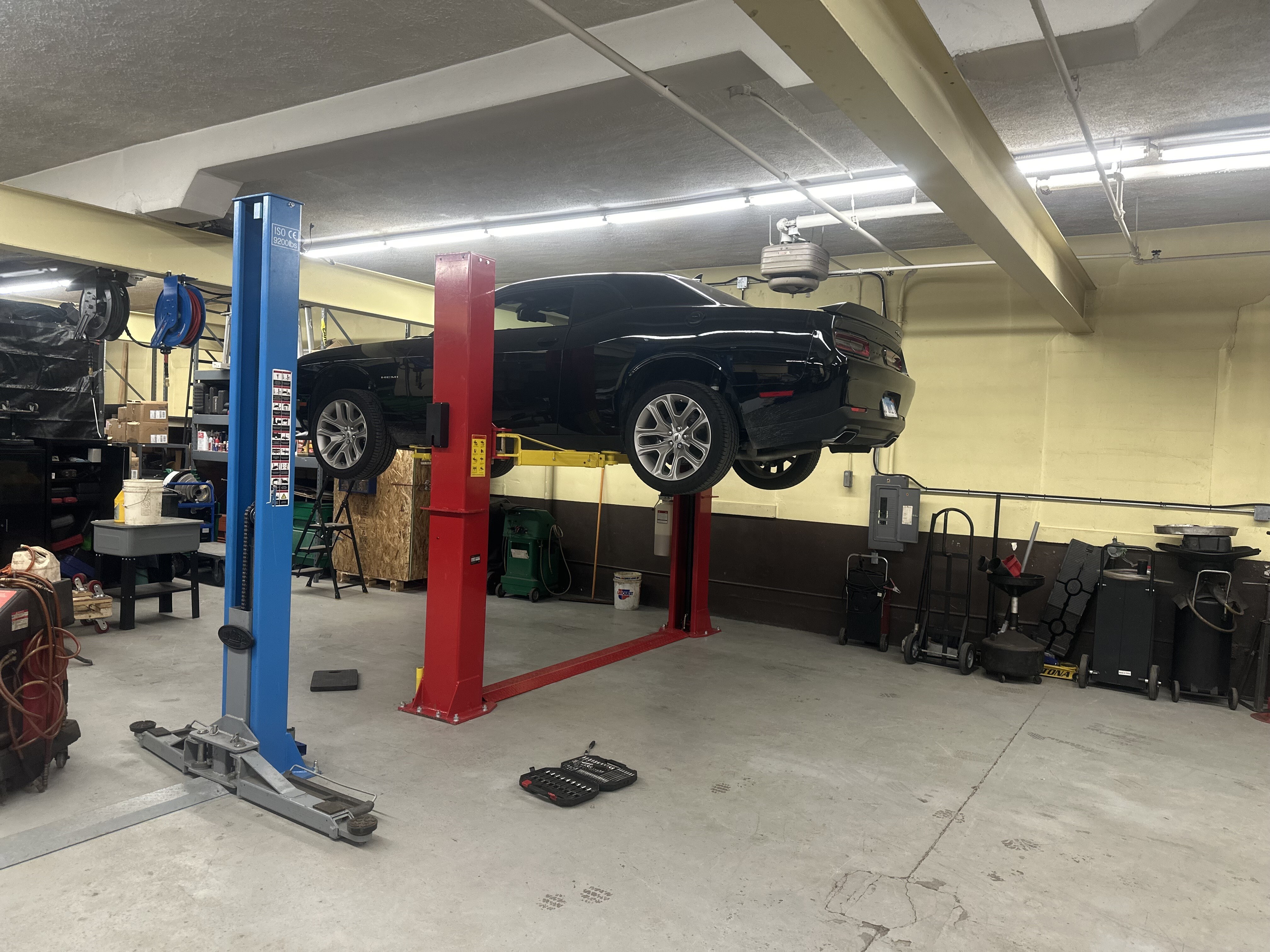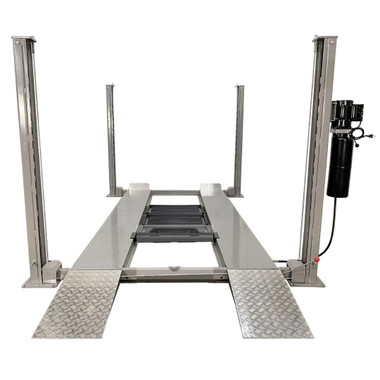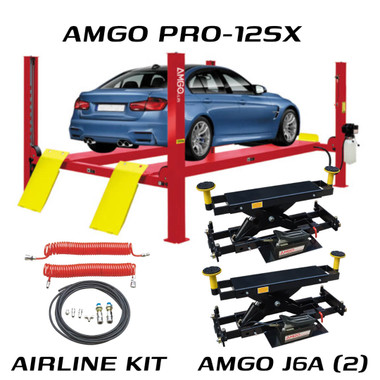What Keeps A 2 Post Car Lift From Tipping Over?
Estimated 0 min read
The stability of a 2-post car lift is crucial for both the vehicle's safety and the operator's. Several key factors prevent tipping, including secure anchoring and safety features like restraint devices. Regular maintenance also plays a crucial role in maintaining stability and safety.
Proper maintenance can extend a 2-post car lift's lifespan, potentially boosting its efficiency by up to 30%. This is critical for ensuring the lift's stability, underscoring the need for consistent checks and upkeep.
Regular inspections can cut repair costs by up to 40% over time, thanks to early detection of problems. This highlights the importance of maintenance in ensuring the stability and safety of 2-post car lifts. It's essential for understanding what keeps these lifts stable and safe.
Understanding the Fundamentals of 2-Post Car Lift Stability
Ensuring the safety of vehicles and operators is paramount. The stability of 2-post lifts hinges on understanding the basics of car lift stability. The design of the base plate and anchoring systems are key. Data shows that the thickness of the base plate, concrete strength, and anchor bolt strength are crucial in preventing accidents.
Car lift stability measures are vital for the safety of both the vehicle and the operator. The American Ladder Institute (ALI) and the Automotive Lift Institute (ALI) have set standards for car lift use. These standards highlight the importance of following safety practices. Regular maintenance checks are also emphasized, with daily inspections recommended. By grasping the fundamentals of 2-post car lift stability, operators can prevent accidents and maintain a safe environment.
Securing 2-post lifts demands attention to detail and adherence to safety protocols. By following industry standards and guidelines, operators can reduce the risk of accidents. This ensures a safe and efficient working environment. Prioritizing safety and taking necessary precautions is essential. It protects operators, their vehicles, and equipment.

The Role of Base Plate Design in Preventing Tipping
Base plate design is key in preventing lift tipping hazards. The design must consider the thickness, material, and shape of the base plate. A well-designed base plate ensures the lift's stability, crucial for hoist safety. Proper column alignment with vehicle lifts is also vital, influencing the base plate's design.
The top beam guides cables or hydraulic lines between posts, vital for safe lift operation. This design aspect is critical in preventing lift tipping hazards. By incorporating sturdy base plates and well-designed top beams, manufacturers can significantly reduce accident risks. This ensures a safe working environment.
Installation of the lift is also critical in preventing tipping hazards. A strong concrete foundation and anchor bolts are essential for securing lifts. Following the manufacturer's instructions and considering the specific lift model's requirements is crucial. This ensures the lift is properly secured and stable, preventing tipping hazards and ensuring hoist safety mechanisms are effective.
Critical Anchoring Systems and Foundation Requirements
Anchoring systems are crucial for 2-post lift stability, securing the lift to the floor. This prevents movement and ensures stability during use. A solid foundation is also essential, providing the necessary support for the lift. A well-built foundation is key to car lift stability and accident prevention.
The choice of anchor bolts is vital, with options like wedge, sleeve, and expansion shield bolts. Each has specific installation features, and proper installation is critical for stability. The load capacity and weight rating of anchor bolts must match the car hoist model's maximum load, as per the manufacturer's guidelines.
Anchor bolts should resist corrosion, even in moist or chemically exposed environments. In areas prone to seismic activity, anchor bolts must withstand seismic forces. Local building codes often specify requirements for anchor bolt depth, spacing, and load capacity. Adhering to these guidelines ensures the stability and safety of your 2-post car lift.
Regular maintenance and inspections of anchoring systems and foundations are vital for car lift stability. This includes checking for wear or damage and performing load tests to ensure safety. By focusing on these critical aspects, you can significantly reduce accident risks and maintain a safe working environment.
What Keeps a 2-Post Car Lift from Tipping Over: Key Safety Features
Safety is the top priority with 2-post car lifts. The main concern is preventing the lift from tipping over. Key safety features built into these lifts solve this problem.
Restraint devices, like gear mechanisms, are vital in keeping the arms in place. This is essential for maintaining stability and preventing tipping. The Automotive Lift Institute (ALI) emphasizes the importance of regular maintenance and inspections.
Other safety features, such as arm locking systems and proper vehicle positioning, are also critical. The positioning of pick-up plates must align with the vehicle's jacking points. These features collectively ensure a safe lifting experience.
Equalizing Systems and Load Management Technology
Car lift stability measures are essential to prevent accidents. Equalizing systems and load management technology are key to maintaining lift stability. They ensure the load is evenly distributed and the lift operates safely.
Accident prevention requires careful lift design and functionality. Safety features like sheaves that reduce friction and locks are crucial. Certified models are generally safer than non-certified ones, even with higher weight ratings.
Regular maintenance and troubleshooting are vital for safe operation. This includes checking for cable slack and ensuring the lift is anchored correctly. Following these measures minimizes accident risks and ensures a safe work environment.
It's crucial to follow the instruction manual and understand safety protocols. This prevents accidents and ensures proper lift use.
Implementing these measures and preventing accidents ensures a safe, efficient work environment. This is critical in industries with frequent heavy lifting, where accident risks are higher.
The Impact of Proper Vehicle Positioning

Proper vehicle positioning is key to maintaining stability in 2-post lifts. It involves careful consideration of the vehicle's weight distribution and center of gravity. When positioned correctly, the load is evenly distributed, ensuring the lift operates safely within its capacity.
Hoist safety mechanisms, such as safety locks and proper synchronization, are also crucial. The vehicle must be positioned correctly to ensure the lift arms rise evenly and the safety locks engage properly. Any discrepancy in the lift arms' movement can risk vehicle instability or damage to the lift. Regular inspections of lift components, like cables and pulleys, are recommended to maintain safety and prevent operational risks.
Proper vehicle positioning is not just important for safety, but also for preventing damage to the vehicle. Improper lifting techniques can lead to vehicle instability, with risks including bent body or suspension components, and potential vehicle falls from the lift. By following the recommended guidelines for vehicle positioning and lift operation, operators can ensure a safe and successful lifting experience. This includes maintaining a recommended rate for raising the vehicle, typically no more than 2 inches per second, to ensure stability and safety.
Regular Maintenance Requirements for Stability Assurance
Ensuring the safety of 2-post car lifts is paramount. The Automotive Lift Institute (ALI) stresses the importance of following safety practices daily. Regular upkeep is vital for maintaining stability and safety. It involves inspecting for any structural damage or excessive wear, and addressing hydraulic or pneumatic leaks promptly.
Adhering to 2-post lift stability essentials, such as routine checks and maintenance, is crucial. The ANSI/ALI ALOIM Standard mandates that operators verify the availability and readability of safety materials. They must also confirm that the lift's load capacity is clearly displayed before use. By adhering to these standards and conducting regular maintenance, operators can mitigate tipping hazards and maintain a secure workspace.
Following the manufacturer's guidelines for maintenance and inspections is essential. This entails examining the lift's cables, hydraulic systems, and other components for wear or damage. Regular maintenance helps prevent accidents and ensures the 2-post car lift operates safely. Preventing lift tipping hazards demands constant vigilance and a dedication to safety.
Common Installation Mistakes to Avoid
Ensuring car lift stability through proper installation is key. The stability of a 2-post car lift depends on correct anchoring and leveling. Yet, common installation errors can lead to instability and accidents.
The Consumer Product Safety Commission reports that 15,000 workers have been injured from lifts, jacks, or stands. This highlights the importance of following proper installation procedures.
Proper anchoring to the floor is crucial. Above-ground surface mount lifts need at least 4 inches of concrete with a compressive strength of 3000 PSI for anchor bolt support. Not meeting these standards can cause the lift to tip, compromising stability.
Also, the correct orientation of flip-up style lift pads is vital. They must form a “V” or an “A” shape to ensure vehicle stability during lifting.
To avoid common installation blunders, it's vital to follow the manufacturer's guidelines and take precautions. Regular safety checks are also key to accident prevention. These checks significantly lower malfunction incidents.
By understanding the factors that prevent a 2-post car lift from tipping and avoiding common mistakes, users can ensure safe and stable operation. This maintains the car lift's stability.
Essential Safety Practices for Long-Term Lift Stability
Ensuring the long-term stability and safe operation of a 2-post car lift requires adherence to key safety practices. Regular maintenance and thorough inspections are critical to prevent accidents. Lift operators must perform daily visual checks on essential components like arm locking mechanisms, rubber mounts, and control functions.
It's also crucial to follow the manufacturer's guidelines on weight limits and jacking points. This helps avoid potential tipping hazards. By doing so, businesses can maintain the stability and reliability of their 2-post car lifts, protecting their employees and customers.
Proper installation by certified professionals is vital for maintaining lift stability. Anchoring the lift securely to a sturdy concrete foundation prevents accidents caused by anchor bolts pulling out. Ongoing training for lift operators on safe lifting procedures is essential. Understanding the safety features of the equipment ensures long-term safe operation.











